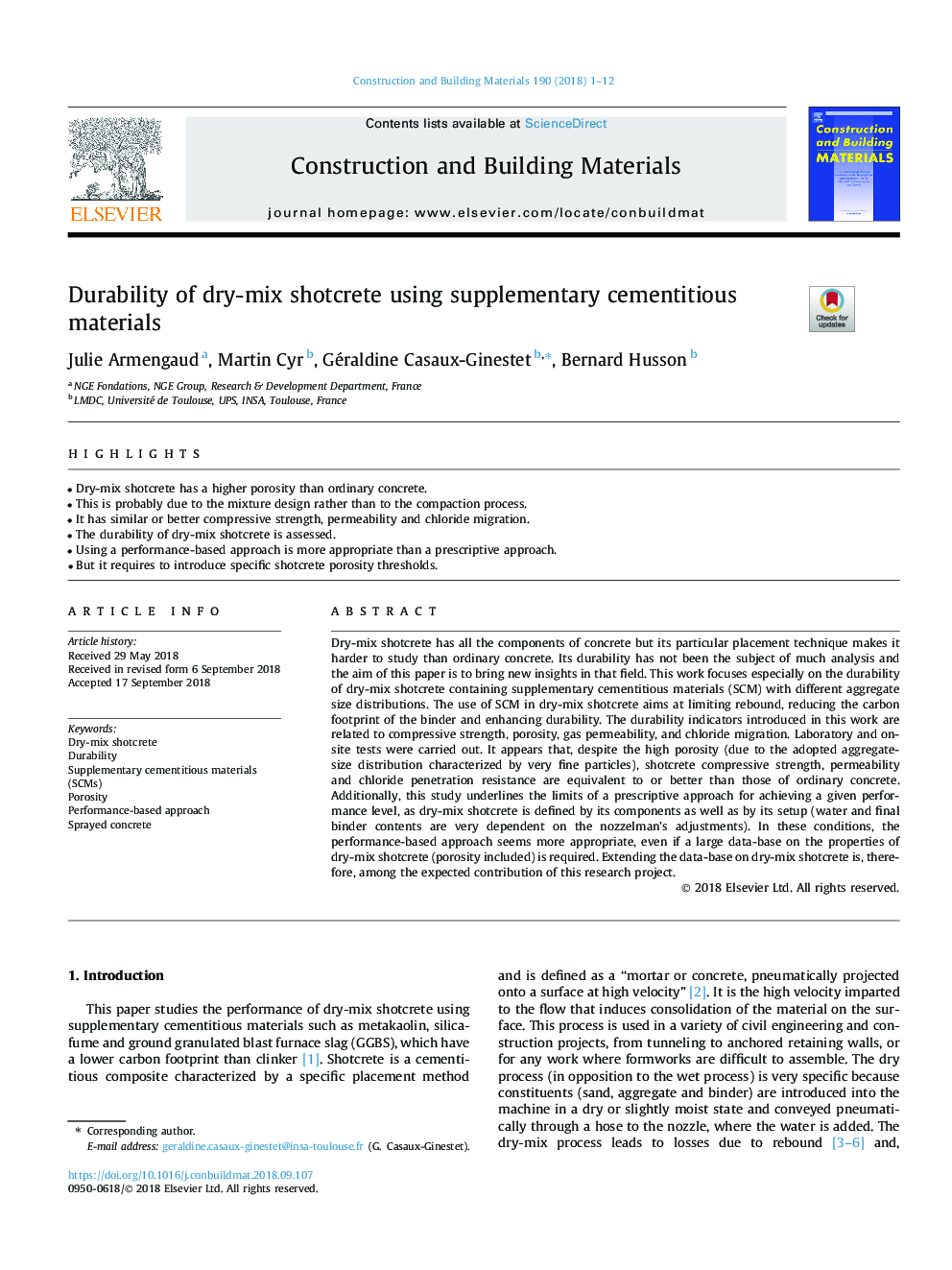| Article ID | Journal | Published Year | Pages | File Type |
|---|---|---|---|---|
| 10225307 | Construction and Building Materials | 2018 | 12 Pages |
Abstract
Dry-mix shotcrete has all the components of concrete but its particular placement technique makes it harder to study than ordinary concrete. Its durability has not been the subject of much analysis and the aim of this paper is to bring new insights in that field. This work focuses especially on the durability of dry-mix shotcrete containing supplementary cementitious materials (SCM) with different aggregate size distributions. The use of SCM in dry-mix shotcrete aims at limiting rebound, reducing the carbon footprint of the binder and enhancing durability. The durability indicators introduced in this work are related to compressive strength, porosity, gas permeability, and chloride migration. Laboratory and on-site tests were carried out. It appears that, despite the high porosity (due to the adopted aggregate-size distribution characterized by very fine particles), shotcrete compressive strength, permeability and chloride penetration resistance are equivalent to or better than those of ordinary concrete. Additionally, this study underlines the limits of a prescriptive approach for achieving a given performance level, as dry-mix shotcrete is defined by its components as well as by its setup (water and final binder contents are very dependent on the nozzelman's adjustments). In these conditions, the performance-based approach seems more appropriate, even if a large data-base on the properties of dry-mix shotcrete (porosity included) is required. Extending the data-base on dry-mix shotcrete is, therefore, among the expected contribution of this research project.
Keywords
Related Topics
Physical Sciences and Engineering
Engineering
Civil and Structural Engineering
Authors
Julie Armengaud, Martin Cyr, Géraldine Casaux-Ginestet, Bernard Husson,
